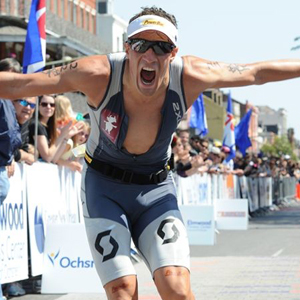Samantha Warriner’s second chance
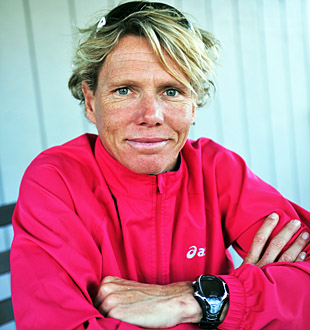
Samantha Warriner is one of the fiercest competitors ever in the sport of triathlon. Those qualities have been well attested by her 7 ITU World Cup victories, her 2008 ITU World Cup series championship, her bronze medal at the 2008 ITU World Championship, and her many Ironman 70.3 wins. But perhaps her greatest moment came just three months after undergoing surgery to fix a career-threatening case of super ventricular tachycardia. That's when the nerves controlling the heart go haywire and start the heart beating at a ridiculously high rate – flooding the great pump and stopping all the fun and games.
Somehow fortune and great doctors smiled on Warriner. Unlike career-ending similar cases suffered by Greg Welch and Emma Carney, Warriner got a second chance to live out her dream. And the first chapter of her second act at age 39 was a win at Ironman New Zealand.
Slowtwitch: One of greatest finishes ever your duel with Erin Densham for the bronze at the 2008 ITU World Championship. Then a year and half later came one of your darkest moments came when your heart problems started.
Samantha Warriner: Like I said getting the bronze at the world champs was an amazing feat. To get any medal at the world champs. Everyone is peaking for that race. So to actually do it. And the way I did it as well. Everyone picked Erin Densham because she had youth on her side. But to me it was just a case of, 'I've got to go with her.' I just kept going right to the end. I think I was most proud because of the way I did it. I could have easily settled. But I didn’t.
ST: Because you were hurting?
Samantha: I was, yeah. I don't know where that sprint came from. It was crazy cold in the water and lots of people were adversely affected. All I remember was she had been behind me, she came through on the last lap and took off. I thought 'I've got to go with her.' Somehow I dug down and it all came out well. I didn’t even know I'd got it until I crossed the line. That was just pure, pure aggression. Pure determination I suppose. Pure determination to get there. The same thing with my heart problem 18 months later.
ST: You were racing well just before that. You didn't see it coming?
Samantha: Some people have it their whole lives and never know about it. You're born with it. I believe it was because I was pushing myself so hard.
ST: You had it for virtually two decades?
Samantha: Exactly. They don’t know why but they say it is common for a lot of endurance athletes. From July through October of 2010, I had an accelerated heart rate and it was coming in clusters, very regularly, and very hard.
ST: What is the technical description of the diagnosis?
Samantha: The doctors call it SVT — super ventricular tachycardia.
ST: It is somewhat similar but different from Greg Welch's ventricular tachycardia issue in what way?
Samantha: There are places in the heart where these things can happen. In my case you have the function of the heart and then you have the electrical pathways. And my function was fine. But it was the electrical pathway that was causing the troubles. The electrical impulses were being sent to the heart. And for some reasons one of my pathways was sending double the amount of messages to the atrium and making my heart pump twice as fast. They didn't know what caused it. No one know why it happened to me. But it was working well for years and all of a sudden it got triggered at low heart rates and at 145 to 150 bpm it would set off and go up to 230. When that happened obviously I couldn’t do anything. It was flooding the heart and I was overwhelmed. So I went back home to New Zealand after doing so well here. I’d won three big 70.3s in a row. I had to get it fixed.
ST: Where did the first episodes occur?
Samantha: In my races. Ironman 70.3 Lake Stevens was probably the first.
ST: At first you thought this was going to go away?
Samantha: I didn't know what the problem was. I thought this must be something with my nutrition. Going too hard on the bike. Things like that. I looked at everything really thoroughly before I got to the bottom of it. Finally Stephen and I took off for four weeks. Totally off. No training. Complete break. Then I'd go running or cycling and within 20 minutes it would just go off.
ST: What was it like trying to figure things out in Whangerei?
Samantha: Whangerei is a small town and every time I went cycling I'd have to hide in the bushes when the heart rate went to 145-150. Because it is a small town, people would always stop and ask if they could help and I'd be embarrassed. I just had to let it calm down and I could go again.
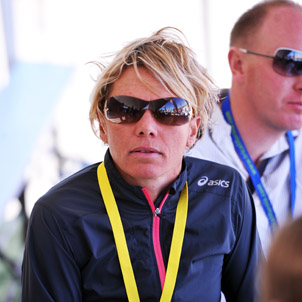
ST: When did you know what it was?
Samantha: My own GP [general practitioner physician] in New Zealand, Jeff Cunningham, said it is common with endurance athletes. He had a suspicion. it was SVT because a few New Zealand athletes have had the same problems. So he sent me to Auckland and hooked me up with as heart rate monitor. I was set up with a heart rate monitor and did what they call a core session. And during that session I had a mild one and I said to the guys, 'Oooh I think it's going off.'
ST: So they were able to see precisely what happened when you were working at 145 bpm and then whoops! It rockets up to 230 bpm.
Samantha: Yes. It records it for 3 minutes. Then you phone it down to the Auckland cardiologist. That's what I did and 10 minutes later he phoned back and said 'Yes, Sam. you have a problem. We think it's SVT. We can see it in the atrium.'
ST: Emma Carney and Greg Welch had a similar situation with ventricular tachycardia. They could not solve it for Greg and so he could not return to his sport. Emma could not race professionally again, but she has been able to do a lot of adventurous activity.
Samantha: I think it depends on whereit happens in the heart. Mine was in the atrium. I think when it's in the atrium it’s not as devastating for high level physical activity. I'm not sure on the statistics. But when it's in the atrium, it is easier to get to, and to fix.
ST: When you got the diagnosis, what was your biggest worry?
Samantha: I think the worst thing was when they told me you can't train because you might have done long term damage to the heart. For me it was like 'I've been training with it for how long? Have I done any damage to the heart?' But once I went in and got the tests and they revealed the function of the heart was fine, that did relieve me. Then I wondered, 'Is this life threatening? Will I be able to race again?'
ST: You are not the sort of person who would press ahead if it would be potentially fatal?
Samantha: No. Not at all. I value life too much. It's not just me this would affect. It’s my husband. It's my family. I would not subject to that life-threatening risk. Then there is also the financial commitment. We had to pay for the operation to get it done. I had been insured by Triathlon New Zealand in the Olympic program. I wasn't aware of it, but once I started focusing on 70.3s, I was dropped.
ST: How would you describe what the doctors did in your operation?
Samantha: They used a very thin tube inserted through the groin and pushed up to the heart. The instrument they used was twice as small in diameter as usual. Normally they use a 12 on normal cases. But because they knew I was an athlete and wanted to get back into the sport, they used a 6. It was twice as small so they would not do any damage. Once they got up there, they short circuit the electrical pathway in the nerve that was malfunctioning. Then they oblate. They cauterized it.
ST: There must have been a element of risk. Why did you opt for the operation?
Samantha: I decided to have the operation because I have these athletic goals and if I want to achieve them I have to do this now. It wasn’t a case of shall I? Or shan't I? I looked at it this way: If I need to carry on and achieve what I want in triathlon, I have to have this done now.
ST: How nervous were you on the day?
Samantha: I obviously trusted the surgeons. The freakiest moment came when I went to Mercy Hospital in Auckland and they wheeled me into the operating theater. It's like you see on TV. It's this big operating theater and there are five doctors working on me and some other people are watching. You realize you are in the hands of these guys – and that was really scary. You hear stories of people who went in healthy and… We don't go there. So that was going through my mind as well. Also, when I woke up and came out of it, there was so much blood around. I thought,'Ewww!' That was scary.
ST: Did you need any transfused blood?
Samantha: No I didn't need any new blood. It took them three attempts to oblate it. They were nice enough to say they had to try again and finally someone said 'I believe we have got it.' And they said it was a successful operation.
ST: You couldn’t have been absolutely sure how it would come out?
Samantha: Not at all. But the surgeons were very good and they reassured you. Stephen was there — and also I knew I couldn't do anything in training until they got it done.
ST: I suspect you were driven in part by the realization that you were getting better at the long course game and you had not seen your best days athletically?
Samantha: People often say to me, 'You do so well for your age.' And I say, 'Age is just a number.' I still enjoy the sport. I still have the passion, I never am reluctant to go out training. And I still believe I can achieve more. That's what keeps me going.
ST: When you started training again, what was the difference?
Samantha: Since it's been done, it’s been amazing. To be honest, I think it's been going on for quite a few years. But I'd just accepted it. Finally, at the end, it kept going off every day and you can't train that way.
ST: When did you know it was safe?
Samantha: Afterwards I didn't go back for tests for a few months because of the money. The thing is, because you have a heart rate monitor, you can download it. Now, when I download my heart rate and I know it’s going to be in a zone from 155 to 165, the result comes back in a straight line. Before it was always zig-zagging up and down. I just thought that was normal. But now you can see the difference.
ST: Things were looking good. But when did you get the official verdict?
Samantha: When I sent one of the downloads to the cardiologist and he could see I was fine. But had to go for the final checkup. But it was also because I live in Whangerei and it takes two hours to drive to Auckland. It wasn’t as if I could pop in after training one day. I'd have to travel down to get it in one day.
ST: What got you through all this?
Samantha: Like that sprint at Vancouver, I think it is determination. With the heart thing it was determination. I want to get back and I want to get back better. It's just an obstacle in the way and there is always a way around. That's the way I view things.
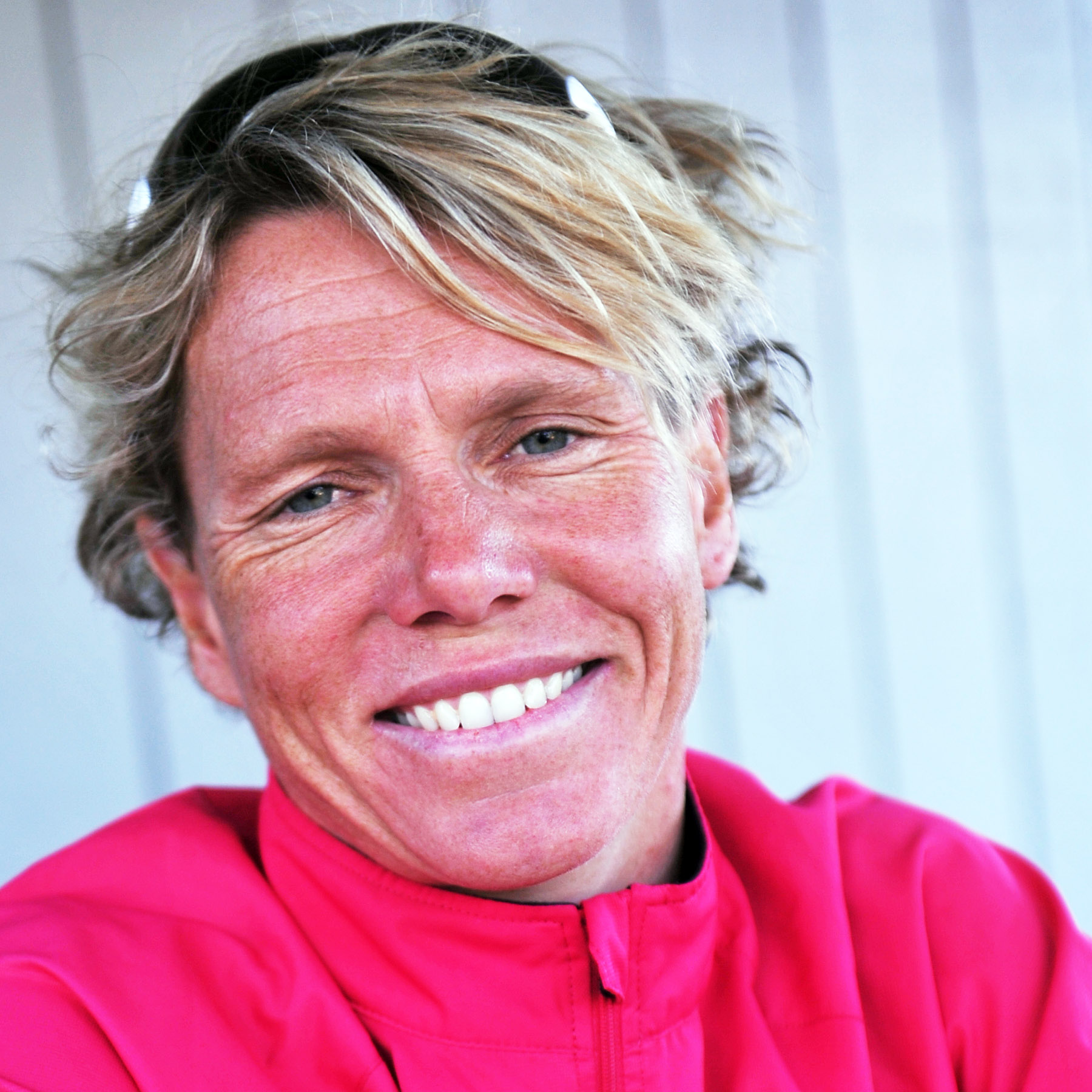
ST: Tell me how you felt after winning IM New Zealand after all this?
Samantha: Unbelievable. Ironman New Zealand was my first race back. It was my first official Ironman. I had done Rev3 at the Iron distance but that was it. I didn't go very well there. But that was because I had the heart troubles.
ST: At Taupo, you were fully functioning — if a little under trained?
Samantha: Yeah. For me it was such an achievement because I knew what it was like before the operation. It was devastating to go through.
ST: Taupo was just three months later?
Samantha: It was 14 weeks. I was really proud of myself.
ST: You were up against a great field. The current Ironman World Champion and the 7-time Taupo winner.
Samantha: When you race Ironman, you have to race your own race. They are great athletes, for sure, but you have to race your own plan. I had done the training. I knew what I had to do. It was just a matter of executing that race plan. And that is what I did. Through all those distractions, I stayed right on course.
ST: How did the race develop?
Samantha: I led from start to finish. I swam about two minutes ahead of them. By the end of the bike I was 20 minutes up.
Stephen Bradley: You were 20 minutes ahead at one point of the bike, but they gained some ground at the end.
Samantha: They ran faster then me, but the gap was so big they couldn’t close it. That's all I had to control. Yeah they may be gaining on me. But if I just kept my pace, it was mine.
ST: I think of you primarily as a runner. But you won it on the bike. Was there any evolution about your bike getting stronger? Or was that a tactic to use the bike rather than the run?
Samantha: I just knew what speed, what cadence I had to do and I stuck to and executed my own race plan. I just had the confidence I could ride at these watts and at these speeds. I just went for it. That's what my coaches said. Go do this. And I did it.
ST: Who is your coach?
Samantha: My coach is John Ackland. He is based in Auckland and he is Terenzo Bozzone's coach, too. I just email and Skype and I see him once a month.
ST: Where does this win rank in your mind?
Samantha: Very highly. I have had some amazing achievements. But after you have faced something that could end your career and you have to turn it around — that itself was the biggest thing. How I turned it around and the journey to get there. It was a hard road back. It really was. I was just proud of A, how I got to the start line ready to race. And B, how I actually raced. Because there was a lot of pressure on from myself and other people. Because everyone in New Zealand wants to win that race.
ST: How faithful were your sponsors?
Samantha: My sponsors stuck by me all the way. Trek, Blue Seventy wetsuits and the New Zealand Refining company. We told them first before we went to the race and everyone stuck by me and they were the first ones to say 'Well done' for Ironman New Zealand. That says so much to me, how they stood by me the whole way.
ST: You were a good biker but you are known for your run. So this one you won it on the bike. Trek has to be happy.
Samantha: I also think they appreciated what I was doing when all this was going on. I love to give back and inspire others. So in New Zealand your winter is our summer season. I couldn’t race but I went to every race I could. I was on the microphone, I appeared at the kids' triathlons. Any way I could I give back. I think the sponsors appreciated that. I didn’t shut myself away. I still got myself out there. I think sometimes the best way is word of mouth. I think people in New Zealand triathlon were aware I got myself out there. I'm wearing the sponsors gear. I stayed positive. And during all this I realized I wouldn't be living this life without my sponsors. I am living the dream that many people have. But I wouldn't be living the dream without my sponsors.
ST: What races have you done since Ironman New Zealand?
Samantha: I placed third at the Olympic distance race at Kenah. I got a penalty for drafting and it cost me the race. At Galveston I didn't go very well there. I got 11th. Then I went to New Orleans and I got 2nd, a minute behind Dibens. I'm the closest girl that's ever been to Dibens. So that was good.
ST: What are your immediate goals and what will be your biggest race of the year?
Samantha: Kona. This will be my first race in Hawaii.
ST: What is your goal for Wildflower?
Samantha: At this moment, I won’t be at my best. Normally, I am an athlete. I train for a race and I am ready. So this will be completely out of my comfort zone. I am racing but I am not fit. So I've got to learn how to deal with that. That is why I am here.
ST: Might this be good training for the big day on the Queen K where you are fit and ready but the pace is fierce and you must be at or just beyond your previous limits.
Samantha: Exactly. You can't worry about who else is in the race. All you can do is control yourself and do your best with what you've got and see how fast you can go. Basically that is what I am going to do here. Deal with what I've got and see how fast I can go on race day. Which is exactly what I've got to do in Kona. Whatever is going on around you, you’ve still got to be in your own bubble and stick to your own race plan. Even here on Saturday, everyone is saying, 'It's such a strong field,' 'so-and-so and so-and-so are here.' That's great. That's brilliant. But at the end of the day it won’t change what I have to do. I have to get the best out of me.
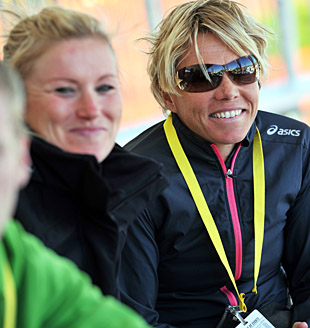
ST: Looking back how much do you value the joy of training and racing around the world?
Samantha: Last year when I was finishing on the podium at every race, I'd be plucked if I lost. I wanted to win. I got second last week and third the week before. This year I am happy with podiums because I know what I've gone through to get there. So definitely. In training sessions, when I have good runs, that is great. When I have bad ones, I think OK. It's not going so well today. Let's get ready for tomorrow.
ST: You are more on an even keel?
Samantha: Yeah I am not so emotional.
ST: How much longer will you race?
Samantha: Who knows? At the end of the day I am still performing well and I am still competitive with those other girls. As far as I can see, I will go until the body says no. Once the body slows down, then you see it is time. I want to have kids at that stage. Now I am enjoying it. I am competitive. As anyone knows, you only have a small opportunity to race at this level.
ST: Yours is longer than most.
Samantha: But you have to make the most of it. I was watching this thing last night about these two boys who were given the opportunity to go round the world with these two top surfers. Stephen saw this and said: 'You are doing this. You are living your dream. How many other triathletes would love to go travel the world and race internationally?' I thought 'Yeah you're right. You forget that as a youngster this was my dream and going to the Olympics was my dream. Racing for New Zealand has come true. And I'm doing it. Sometimes you have to be taken back to that fact. I'm still living the dream. I'm a professional athlete. I think back to the first time I went overseas and my job was professional triathlete. That was such an honor. It was always what I wanted to do. Sometimes you have to take yourself back and think: Wow!


